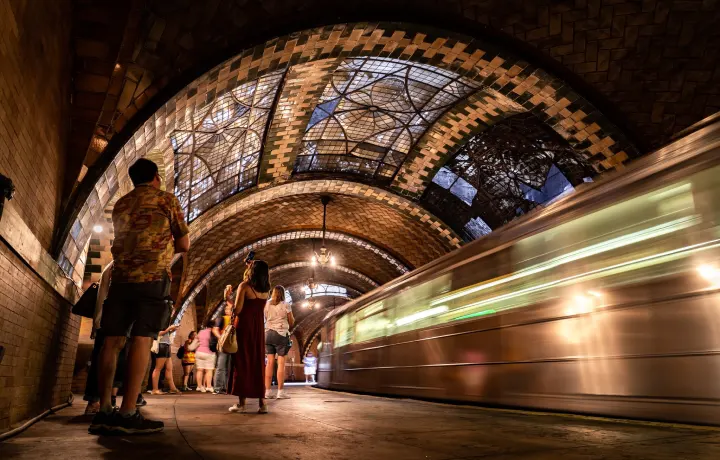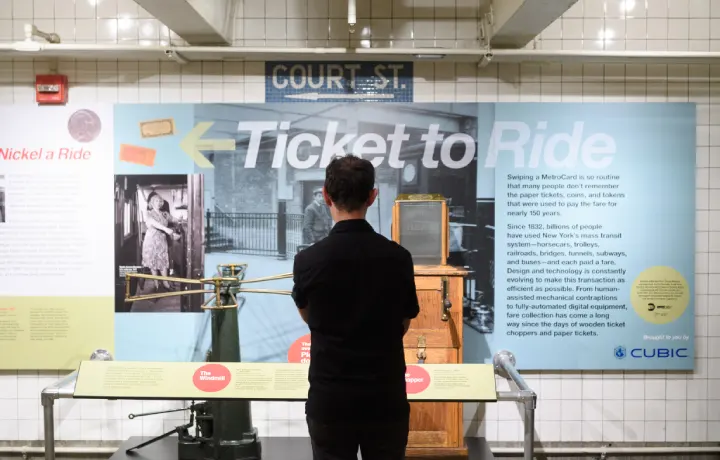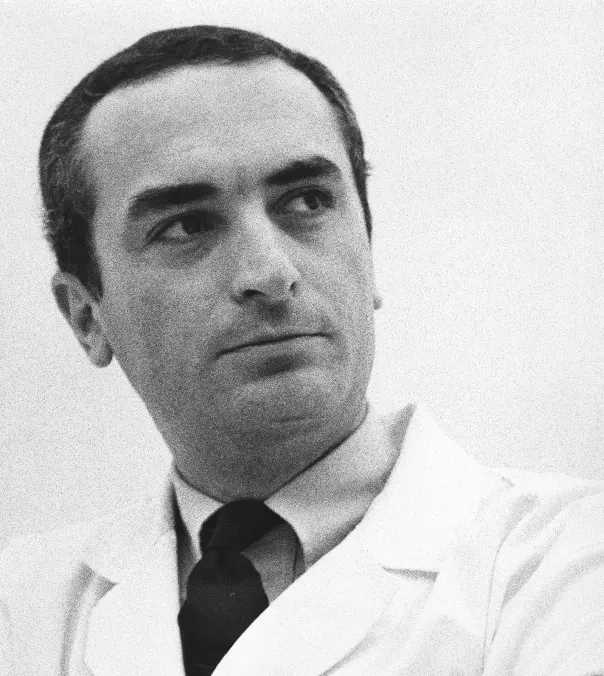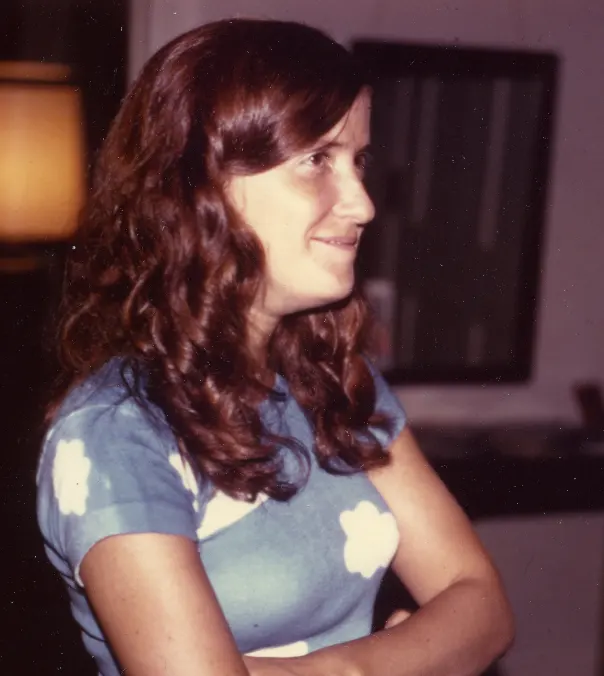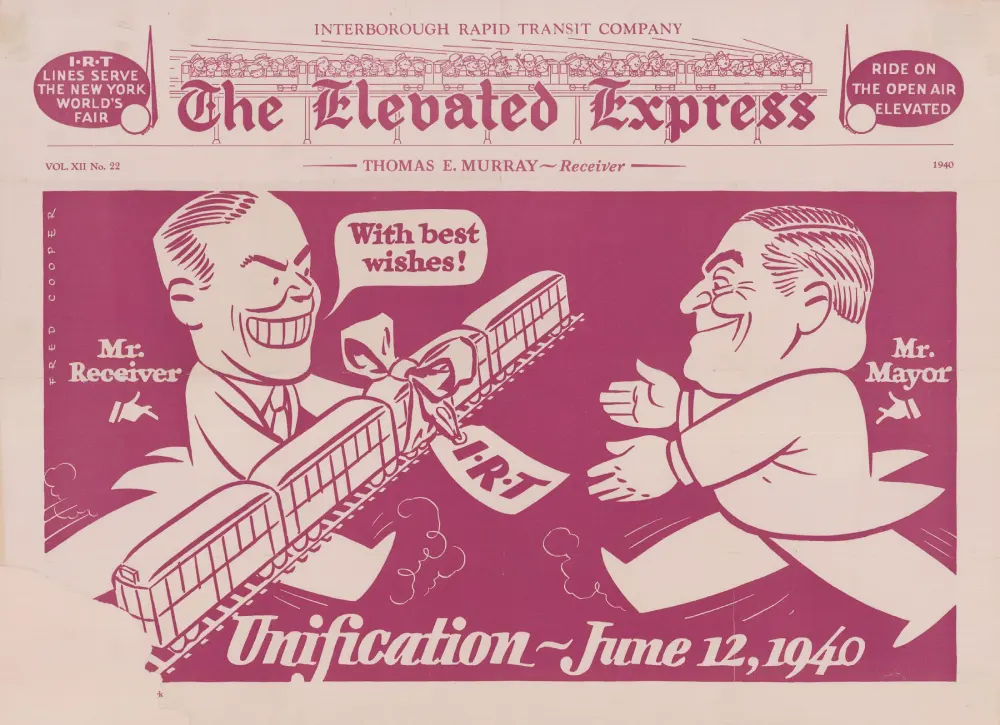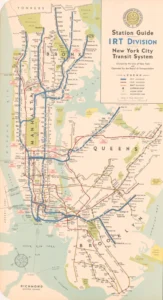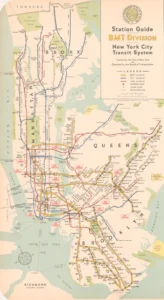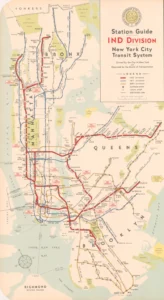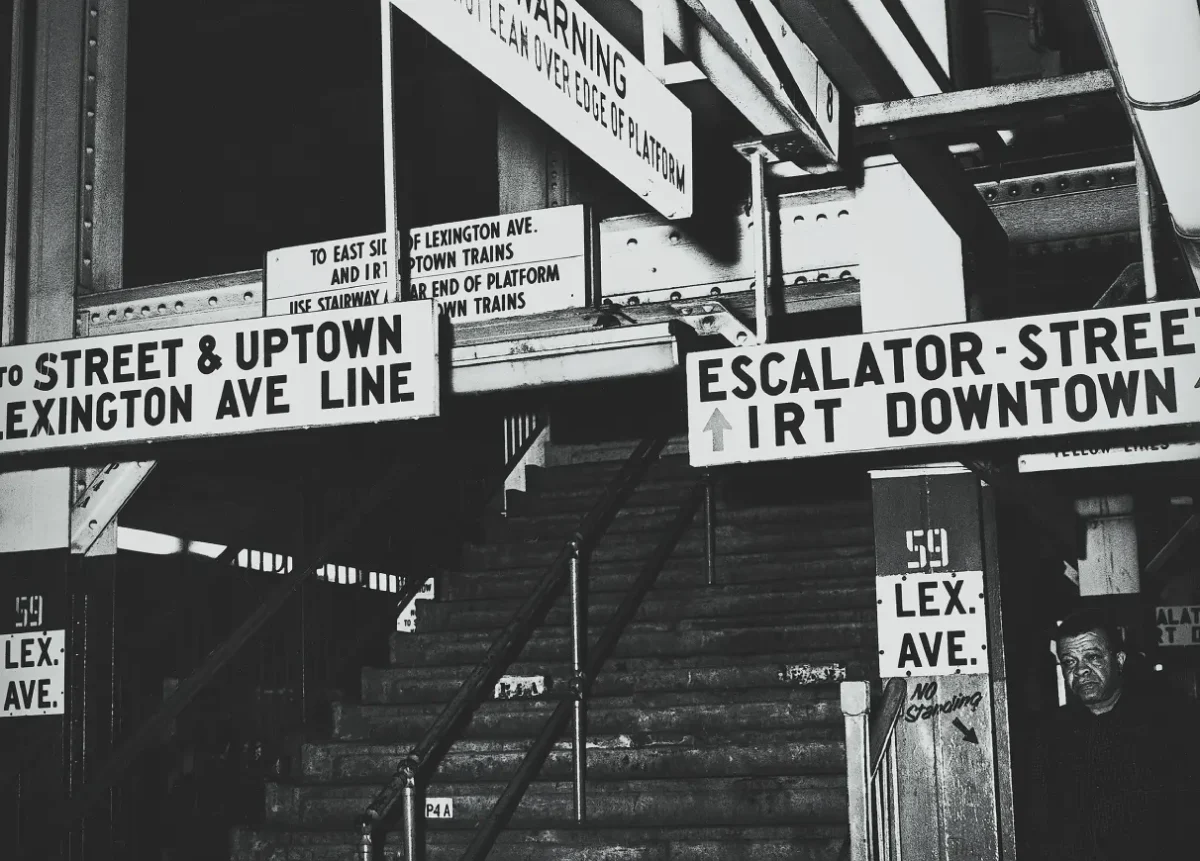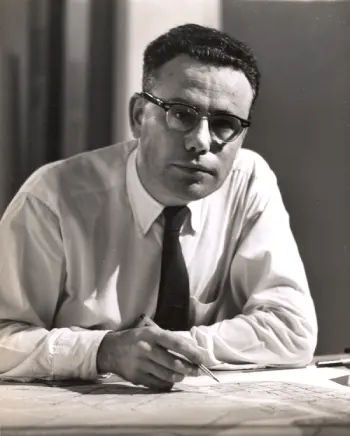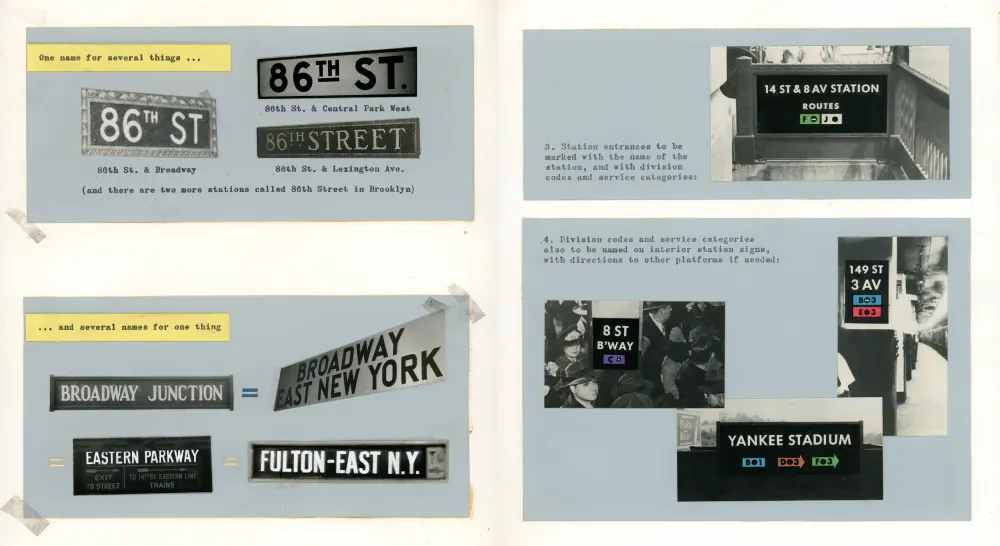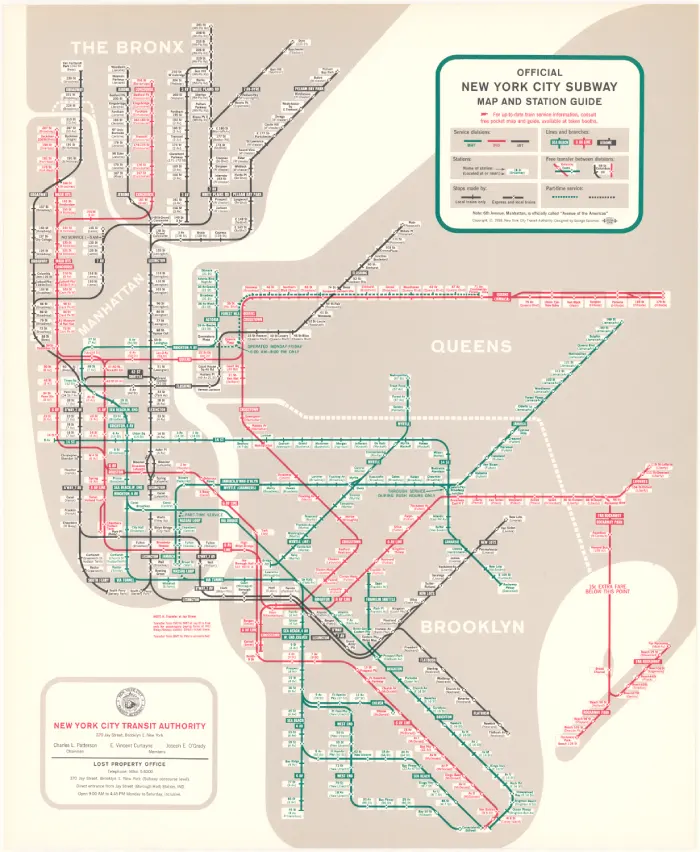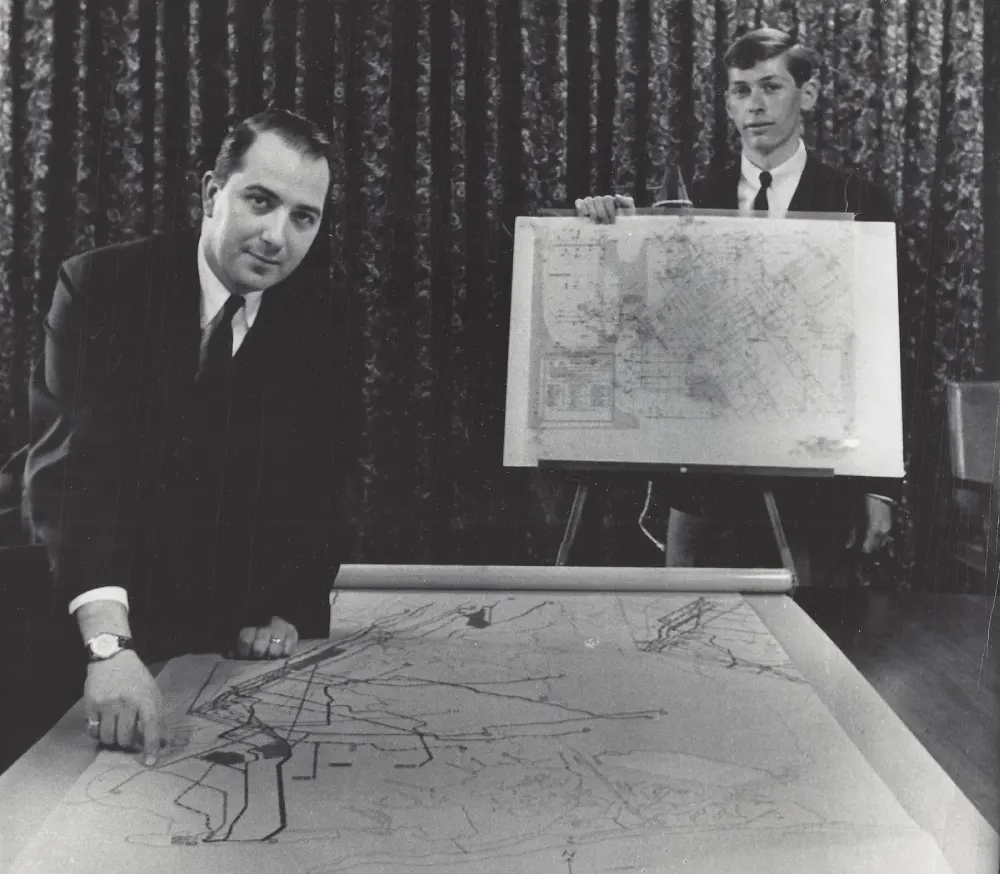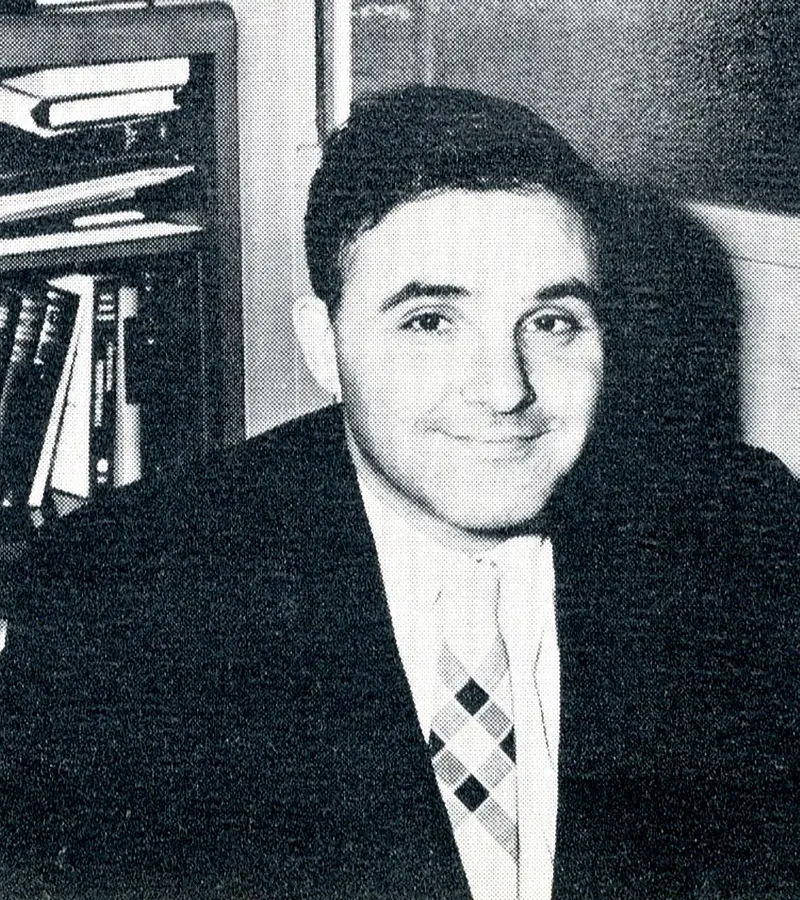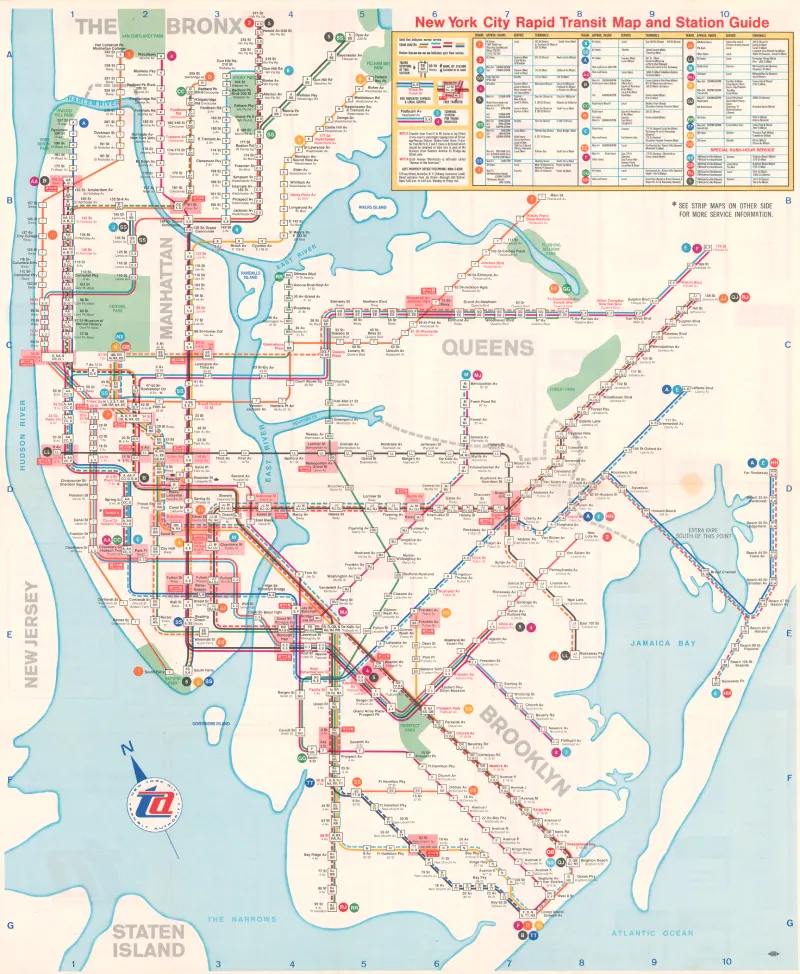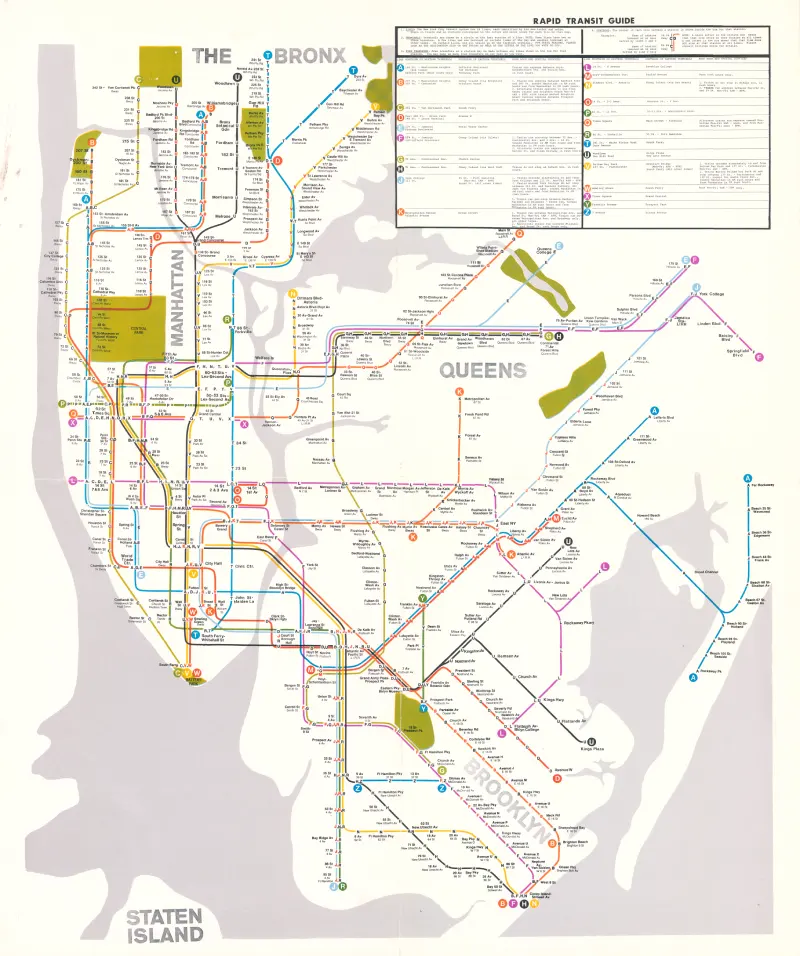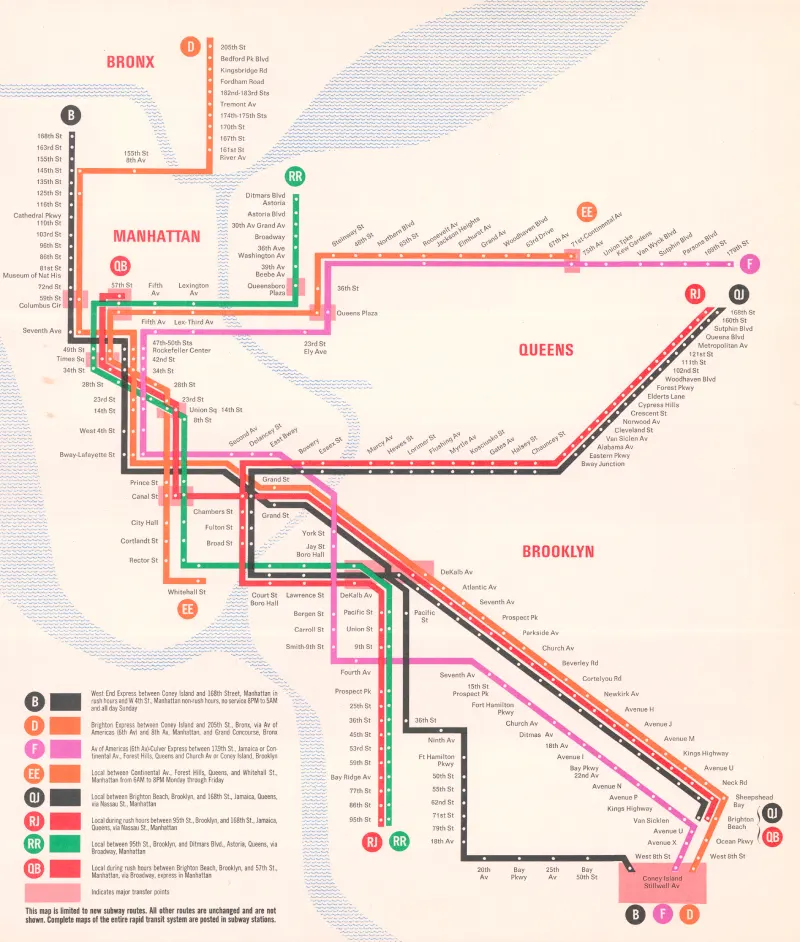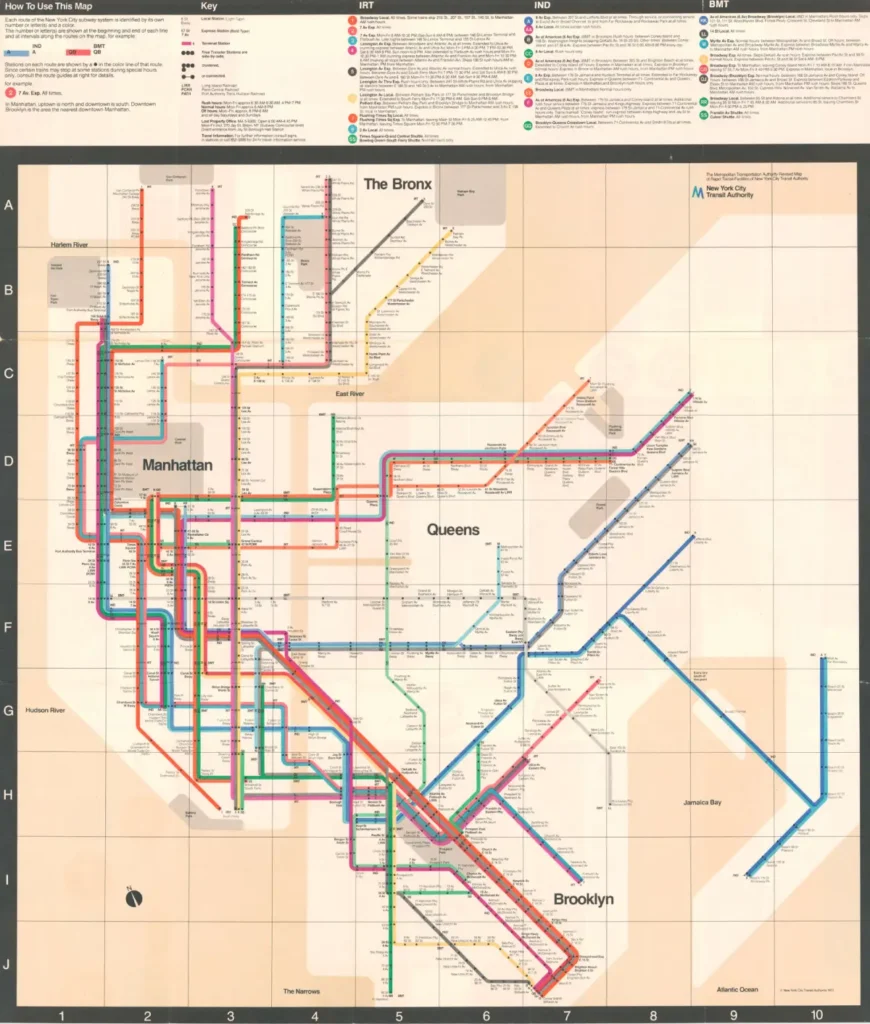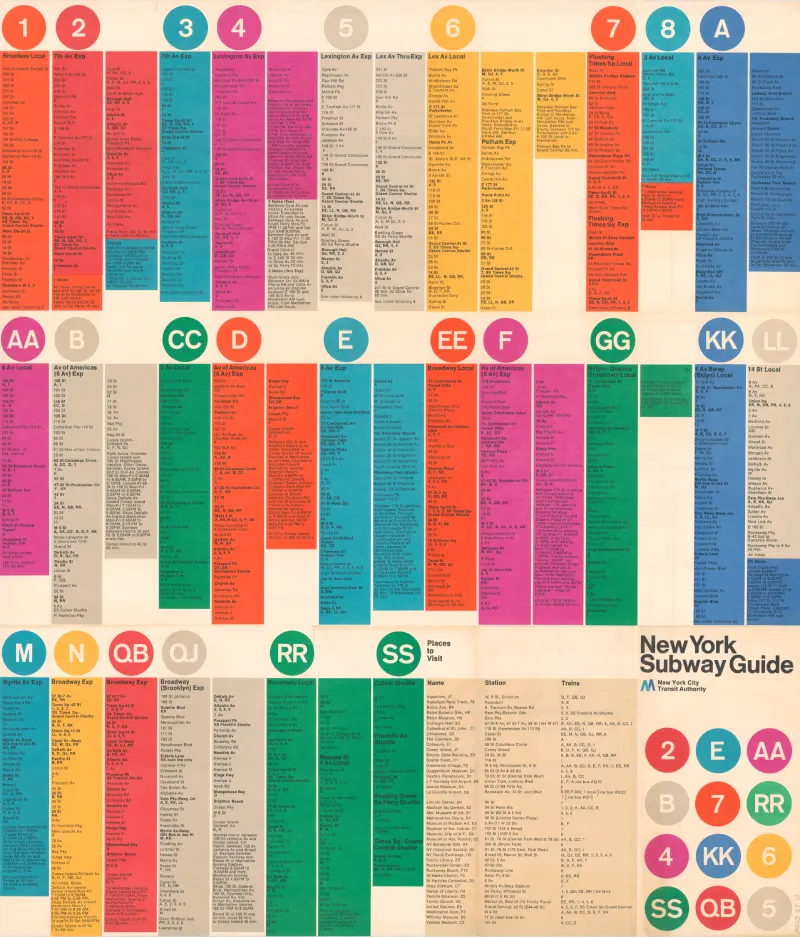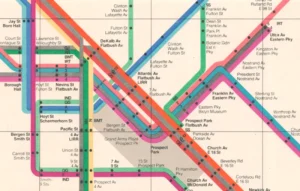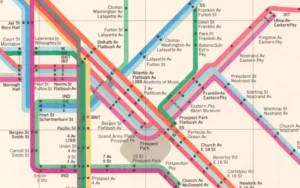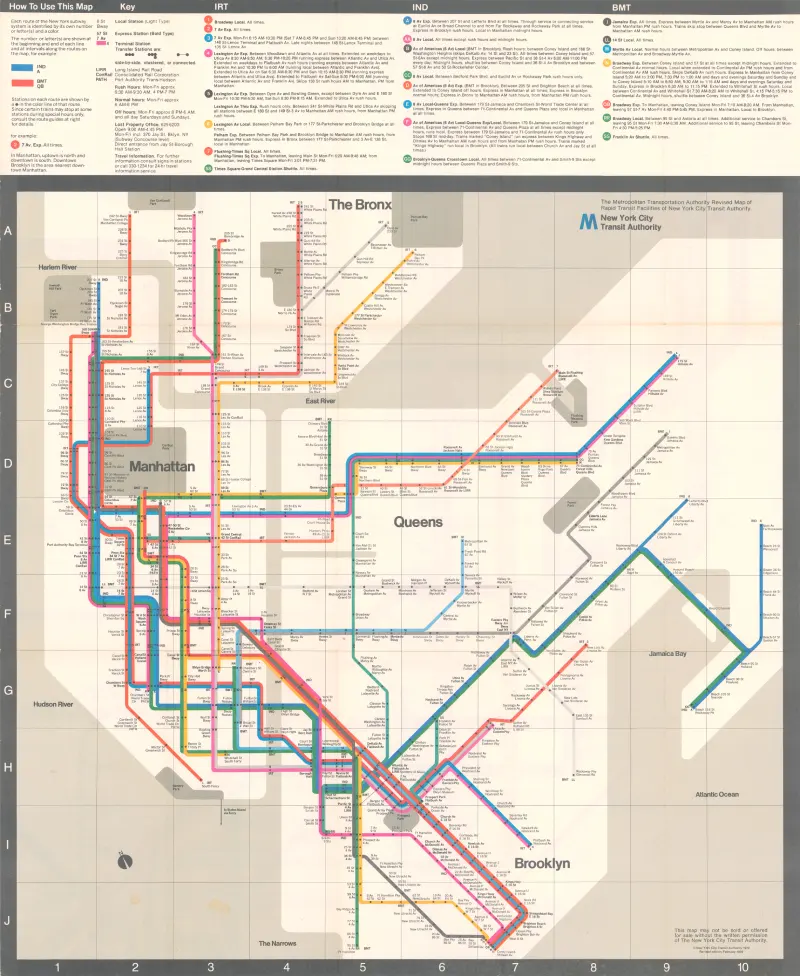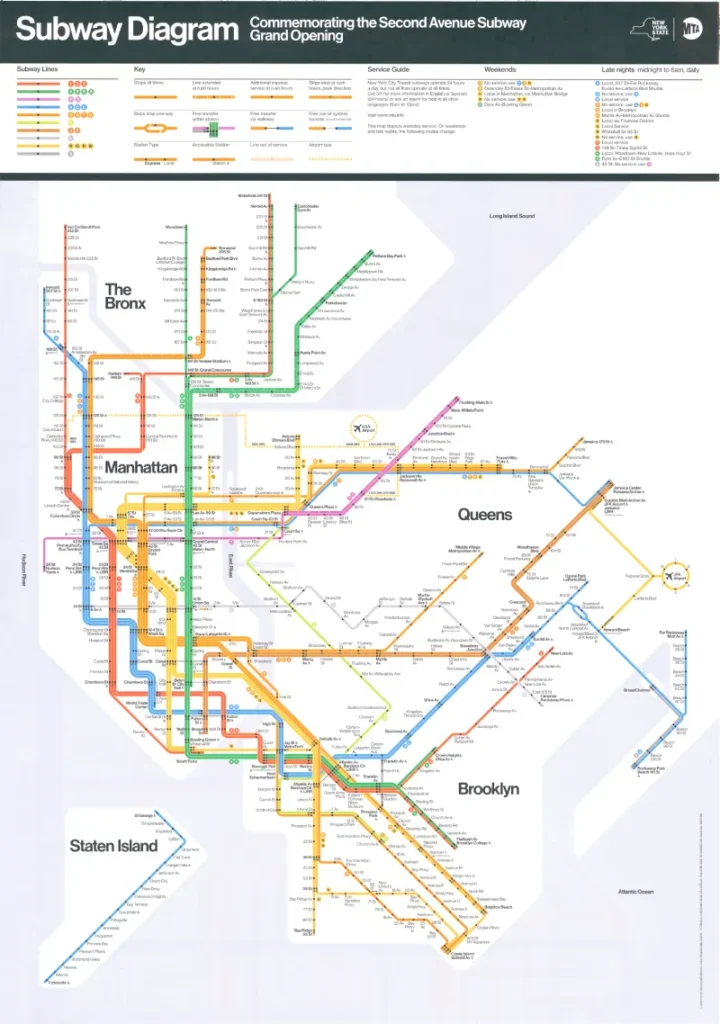DIGITAL EXHIBIT
Towards a Better Way: The “Vignelli” Map at 50
In August of 1972, the New York City Transit Authority (NYCTA) debuted a colorful diagrammatic map of the subway system, now commonly referred to as the Vignelli Map. It was the first map published by the Authority designed by an established design firm. It also incorporated several design ideas into one map that had not been combined before including a service diagram drawn with straight lines instead of curved ones, and the absence of any details that did not convey information to customers. The most obvious stylistic change was to remove the majority of New York’s topography, making most of its boundaries defined by bodies of water. The firm that designed this map was Unimark International. Its principals, Bob Noorda and Massimo Vignelli, as well as other designers including Joan Charysyn, changed the way New Yorkers thought about (and navigated) the subway forever.

